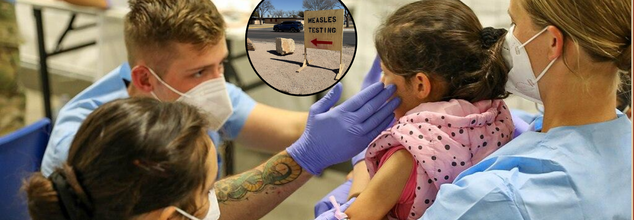
'Repeated' Medical Imaging Test Could Be Exposing Millions To Radiation-Linked Tumors
What if the very test meant to save your life could be subtly increasing your risk of cancer? That’s the alarming question emerging from new research on the widespread use of CT (computed tomography) scans—advanced imaging tools that use X-rays to generate cross-sectional views of the body. Often hailed for their ability to catch internal injuries, tumors, and other critical conditions early, CT scans have become a routine part of modern diagnostics. Yet as their use skyrockets globally, so do concerns over the health consequences of repeated and, at times, unnecessary exposure to high doses of radiation.
There’s no denying the clinical value of CT scans. They help detect life-threatening bleeding, guide surgeons during complex procedures, and monitor the progression of diseases like cancer. In the U.S. alone, over 93 million CT scans are performed each year—a number that continues to grow, according to medical market research firm IMV.
But what often goes unnoticed is the invisible cost: radiation exposure.
Unlike conventional x-rays, which emit lower doses, CT scans deliver substantially higher radiation levels. A chest x-ray, for instance, exposes a patient to 0.1 millisieverts (mSv), whereas a chest CT scan delivers around 7 mSv—that’s 70 times more. These numbers are not trivial, especially when stacked up over multiple scans throughout a person’s life.
One of the most concerning revelations from a study led by Dr. Rebecca Smith-Bindman, professor at the University of California, San Francisco, is the staggering inconsistency in radiation doses across CT machines. The dose for the same scan type can vary by a factor of 10 to 15 times, even when used for identical clinical reasons.
“In some cases, one machine could be exposing patients to tenfold more radiation than another,” Dr. Smith-Bindman told NBC News. This lack of regulation means patients could be unknowingly absorbing dangerous levels of radiation, increasing their long-term cancer risk.
Her 2009 study, which analyzed the 11 most common CT scan types in over 1,000 patients, found that radiation doses for an abdominal and pelvic scan could range up to 31 mSv—comparable to about 163 chest x-rays or 160 roundtrip flights between New York and Tokyo.
The link between medical radiation and cancer is not new, but its scale is only now becoming clear. According to findings published in The New England Journal of Medicine, CT-related radiation could be responsible for up to 2% of all cancers—translating to tens of thousands of cases annually.
Dr. Smith-Bindman’s team estimated that one in 270 women and one in 600 men who undergo certain types of CT scans at age 40 may develop cancer as a direct result of the scan. For younger patients in their 20s, the risk doubles.
Radiation has long been associated with cancers such as leukemia, breast, colon, ovarian, bladder, stomach, and lung cancers. With rising CT scan usage and no uniform standard for radiation dosing, experts warn we could be looking at a silent, radiation-fueled cancer epidemic in the coming decades.
Are CT Scans Overprescribed?
Part of the answer lies in defensive medicine—doctors fearing lawsuits may order extra tests “just to be safe.” Financial incentives also play a role; CT scans are among the most expensive diagnostic tools, and hospitals benefit when more of them are used. This creates a dangerous mix of overdiagnosis and overexposure.
A separate long-term study from Brigham and Women’s Hospital in Boston analyzed over 31,000 patients and found that 33% had received more than five CT scans, and 1% had more than 38. In such cases, the cancer risk spiked to over 12% above the national average.
Recognizing the growing threat, the U.S. government is beginning to take action. New Medicare regulations, introduced during the final weeks of the Biden administration, require hospitals and imaging centers to record and share radiation dosage data from CT scanners. These rules will be phased in over three years and could include fines for non-compliance by 2027.
Whether these policies survive under subsequent administrations remains to be seen, but experts agree that standardization of CT scanning practices is urgently needed.
What Patients Can Do Protect Themselves?
While some CT scans are medically necessary and lifesaving, patients can—and should—take steps to minimize unnecessary exposure:
Ask questions: Before undergoing a CT scan, ask your doctor how the results will influence your care. Could a lower-dose scan like an MRI or ultrasound provide the same insight?
Track your imaging history: Keep a personal record of all diagnostic scans you've had. It helps doctors make better-informed decisions and avoid redundant testing.
Consider spacing out scans: If you're undergoing routine imaging for a chronic condition, discuss with your provider whether extending the interval between scans is possible.
Avoid "just in case" scans: CT scans should not be used as reassurance tools in asymptomatic individuals, as they can lead to incidental findings, triggering a cycle of further tests and radiation exposure.
CT scans have revolutionized medical diagnostics and undoubtedly saved countless lives. But with great power comes great responsibility. The lack of regulation, wide dose variation, and rising use of these high-radiation scans call for a reevaluation of when and how they are used.
As science continues to uncover the long-term impact of medical imaging, one thing is clear: it’s time for the medical community—and patients themselves—to weigh not just the benefits, but the hidden risks, of overexposure to radiation.

Credits: Canva
World Health Day 2025: History, Theme, Importance, And Significance
The World Health Organization (WHO) states that every year on April 7, the World Health Day is observed to draw attention to a specific health topic of concern to people all over the world. The date of 7 April marks the anniversary of the founding of WHO in 1948.
History of World Health Day
This day was first proposed to be celebrated at the First Health Assembly in 1948, and ever since, from 1950, it has been observed. It marks the founding anniversary of the WHO, which a global platform that works on urgent health issues as well as promoting awareness. The WHO also addresses critical health concerns across the world and remains free from political influences. It also uses this day to draw international attention on health priorities.
The WHO notes that when diplomats met to form the United Nations in 1945, one of the things they discussed was setting up a global health organization, this is how WHO's Constitution came into being from April 7, 1948. This is the date that we now celebrate every year as World Health Day.
Theme Of World Health Day
Each year, the WHO announces a specific theme for the World Health Day. This is to spotlight a key area of concern in the health sector. This year, the theme for 2025 is "Healthy Beginnings, Hopeful Futures".
The WHO on its official X handle posted a collaboration with the Ministry of Health and the authorities of Hera to deliver an Integrated Health Program observing this year's theme:
This year's campaign and the theme focus on collaborating with governments and health bodies to invest in impactful initiatives that can reduce preventable deaths. It also aims to improve long-term well-being of mothers and newborn.
The focus points of the theme are:
Helping every woman and baby survive and thrive: The WHO mentions that based on currently published estimates, close to 300,000 women lose their life due to pregnancy or childbirth each year. Whereas 2 billion babies die in their first month of life and 2 million are stillborn. This means roughly 1 preventable death every 7 seconds.
Listening to women and supporting families: WHO mentions that women and families everywhere need high quality care that supports them physically and emotionally, before, during and after birth. Health systems thus must evolve to manage the health issues that impact maternal and newborn health.
"The health of mothers and babies is the foundation of healthy families and communities, helping ensure hopeful futures for us all," notes WHO.
Significance Of World Health Day
For the last five decades, the World Health Day, which celebrates the founding day of WHO has played an important role in highlighting key health issues. It has focused on various health issues including mental health and well-being, maternal and child health, and the growing impact of climate change on global health.
The campaign also facilitates conversations and discourse around health, which can then promote awareness among people. This day therefore serves as a reminder to unite global efforts and direct attention towards building a healthier and safer communities around the world.

Second Child Dies In Texas Measles Surge, Nearly 500 Infected And Counting
The United States is witnessing its most significant measles outbreak in over a decade, with Texas at the epicenter. The recent death of an 8-year-old child in Lubbock marks the second pediatric fatality from the disease in the state this year. The child, who was unvaccinated, died of "measles pulmonary failure" — a severe complication of the viral illness — at University Medical Center Children’s Hospital.
This latest fatality, following the February death of another school-aged unvaccinated child, underscores the growing public health emergency in Texas and beyond. As of early April, the Texas Department of State Health Services has confirmed 481 measles cases — a 14% increase over the previous week — with total U.S. cases exceeding 628 across 21 states and Washington D.C.
Both child victims were reportedly healthy before contracting measles, with no underlying conditions. Yet neither had received the MMR (measles, mumps, rubella) vaccine, which the Centers for Disease Control and Prevention (CDC) confirms is 97% effective in preventing measles after two doses.
According to the CDC, about 1 in 20 children with measles will develop pneumonia — the most common cause of death from measles in young children. Additionally, 1 to 3 of every 1,000 infected children may die from respiratory or neurological complications. Measles also induces "immune amnesia," weakening the immune system for months or even years.
"The disease has returned because a critical percentage of parents have chosen not to vaccinate their children, in large part due to misinformation," said Dr. Paul Offit, Director of the Vaccine Education Center at Children’s Hospital of Philadelphia.
The outbreak that began in Seminole, Texas, in January has spread into New Mexico, Oklahoma, Kansas, and even Mexico. New Mexico has reported 54 cases, Oklahoma 10 (eight confirmed and two probable), and Kansas 24, many likely linked to the Texas outbreak.
Most cases are in individuals under 18 years old, and the majority of them were unvaccinated. Public health officials fear that these figures may be an undercount, as many people with mild or unreported symptoms may not seek medical care or testing.
“This virus is spreading fast, and it’s hitting our youngest, most vulnerable populations the hardest,” said Katherine Wells, Public Health Director in Lubbock.
Hospitals in West Texas have been strained by the surge. University Medical Center Children’s Hospital and Covenant Children's Hospital have collectively treated dozens of children for measles-related complications — from respiratory failure to vitamin A toxicity in children given alternative treatments without medical oversight.
Dr. Lara Johnson, Chief Medical Officer at Covenant, reported treating multiple children for liver issues caused by excess vitamin A. “We understand the desperation parents may feel, but unregulated treatment is dangerous,” she warned.
U.S. Health and Human Services Secretary Robert F. Kennedy Jr. has faced growing scrutiny over what many in the medical community call a slow and inadequate response. Once a vocal anti-vaccine advocate, Kennedy has only recently acknowledged the importance of the MMR vaccine publicly.
Kennedy visited Gaines County, the outbreak’s epicenter, over the weekend to meet with grieving families and issued a statement urging vaccination. However, critics, including FDA’s former vaccine chief Dr. Peter Marks, say his past stance has contributed to vaccine hesitancy and misinformation.
“This is the epitome of an absolute needless death,” Marks said. “These kids should get vaccinated — that’s how you prevent people from dying of measles.”
The CDC has deployed teams to West Texas and continues to urge parents to immunize their children. Dr. Manisha Patel, the agency’s incident manager for the outbreak, emphasized that during outbreaks, even babies as young as six months should receive their first dose of the MMR vaccine.
“This isn’t the time to wait. Parents need to act now,” Patel said at a press conference. She urged families not to delay seeking medical attention for any child showing measles symptoms such as high fever, rash, or persistent cough.
Still, the CDC’s own messaging has been mixed. A spokesperson recently referred to vaccination as a "personal decision," diverging from long-standing public health guidance — a shift that has puzzled and concerned many healthcare professionals.
With more than double the measles cases reported this year compared to all of 2024, the U.S. is now on a dangerous trajectory. The outbreak is expected to continue for several months, possibly into 2026, unless drastic steps are taken to increase immunization rates.
Senator Bill Cassidy of Louisiana, a Republican and physician, has called for Kennedy to testify before the Senate Health Committee. “Everyone should be vaccinated! There is no treatment for measles. No benefit to getting measles,” Cassidy wrote on X.
Experts agree that restoring public trust in vaccines, bolstering access to immunization clinics, and combating misinformation are essential next steps. If not, more children — like the ones in Texas — will pay the ultimate price.

Credits: Canva
Forget Love, Remember This: Married People May Be More At Risk For Dementia, Says Study
For decades, marriage has been widely regarded as a "protective" factor against many health conditions, ranging from heart disease to depression. The standard narrative has been that the married live longer, are healthier, and enjoy improved mental well-being than the unmarried. But what if that presumption, especially when it comes to cognitive health, doesn't quite hold up?
A new study in Alzheimer's & Dementia flips on its head this traditional wisdom. Married people are at much greater risk of dementia than divorced, widowed, or never-married adults, the 2025 study by Florida State University and the University of Montpellier researchers found.
The longitudinal study followed 24,107 older adults for 18 years. The participants ranged in age from 50 to 104 (mean age: 72) and were recruited through the National Alzheimer's Coordinating Center, which has more than 42 Alzheimer's Disease Research Centers throughout the U.S. None of the participants had been diagnosed with dementia at the time of enrollment, although some showed symptoms of mild cognitive impairment.
The results were dramatic:
- Marrieds had a 50% greater risk of getting dementia than their unmarried counterparts.
- Never-married subjects had the lowest risk for dementia, although the difference was not statistically significant between them and divorced or widowed subjects.
- Even among the subjects who at the beginning presented with mild cognitive impairment, those who were not married were less likely to reach full dementia.
- Participants who lost their spouses in the course of the study demonstrated a reduced risk of developing dementia when compared with those who remained married.
The findings contradict the long-standing assertion that marriage invariably improves health and indicate that marital status might play a more complicated role in cognitive aging than heretofore assumed.
Why Might Unmarried People Fare Better Cognitively?
Although the researchers could not identify a single definitive explanation for these findings, they presented several plausible hypotheses.
One of the strongest findings was that never-married and unmarried people generally have more robust and varied social networks. They are more likely to have active friendships, be involved in their communities, and develop significant relationships outside of a marital bond.
Married people are less socially integrated and have less frequent, lower-quality interactions in their networks than are unmarried people," the authors of the study wrote.
Moreover, being single tends to demand a higher level of self-sufficiency, which prompts individuals to remain mentally active by taking care of their lives on their own. The psychological complexity and variety of experiences in the lives of unmarried individuals may possibly serve as a buffer against cognitive decline.
Rethinking the Health Benefits of Marriage
This research is part of a growing body of evidence challenging the general assumption that marriage is good for health all the time. Previous studies have consistently produced correlations between marriage and health, but these rarely control for confounding variables such as access to health care, resources, or prior health status.
Significantly, correlation is not causation. Just because married individuals often look healthier sometimes doesn't imply that marriage causes it. Instead, it might be that healthier individuals are likely to marry or that marriage gives economic and logistical benefits that support general health.
Actually, a 16-year Swiss study with more than 11,000 adults discovered that marriage did not benefit participants' health—and health actually reduced after marriage in some instances.
As populations in societies worldwide contend with aging populations and increasing rates of dementia, the results from this new study provide essential public health planning. Marriage as a protective factor assumptions may no longer be valid, particularly when estimating dementia risk among older adults.
The clinicians and policymakers can also be faced with the possibility of considering broader approaches that will enhance cognitive function in all the elderly, including those who are married and not married. Such initiatives can reinforce community ties, foster lifelong education, promote mental and physical stimulation, and provide support systems extending beyond the nuclear family structure.
As larger numbers of older persons become divorced, widowed, or never married, it will become crucial to know how these varied life circumstances influence brain health as the foundation of building equal-opportunity, effective health interventions.
Although this paper presents highly compelling findings, further investigation is required to disentangle the intricate dynamics among relationship quality, social connectedness, stress, lifestyle habits, and their roles in cognitive aging.
Is marital conflict stress a cause of cognitive decline? Does marriage caregiving wear down neurological well-being? Or is it the psychological autonomy fostered by the unmarried that is the secret protector against dementia? These are questions left open—and in need of exploration.
In a world in which marriage is so often idealized as the gold standard of a happy and fulfilling life, these findings serve as a bracing—and empowering—reminder- there is no single formula for aging well.
© 2024 Bennett, Coleman & Company Limited

